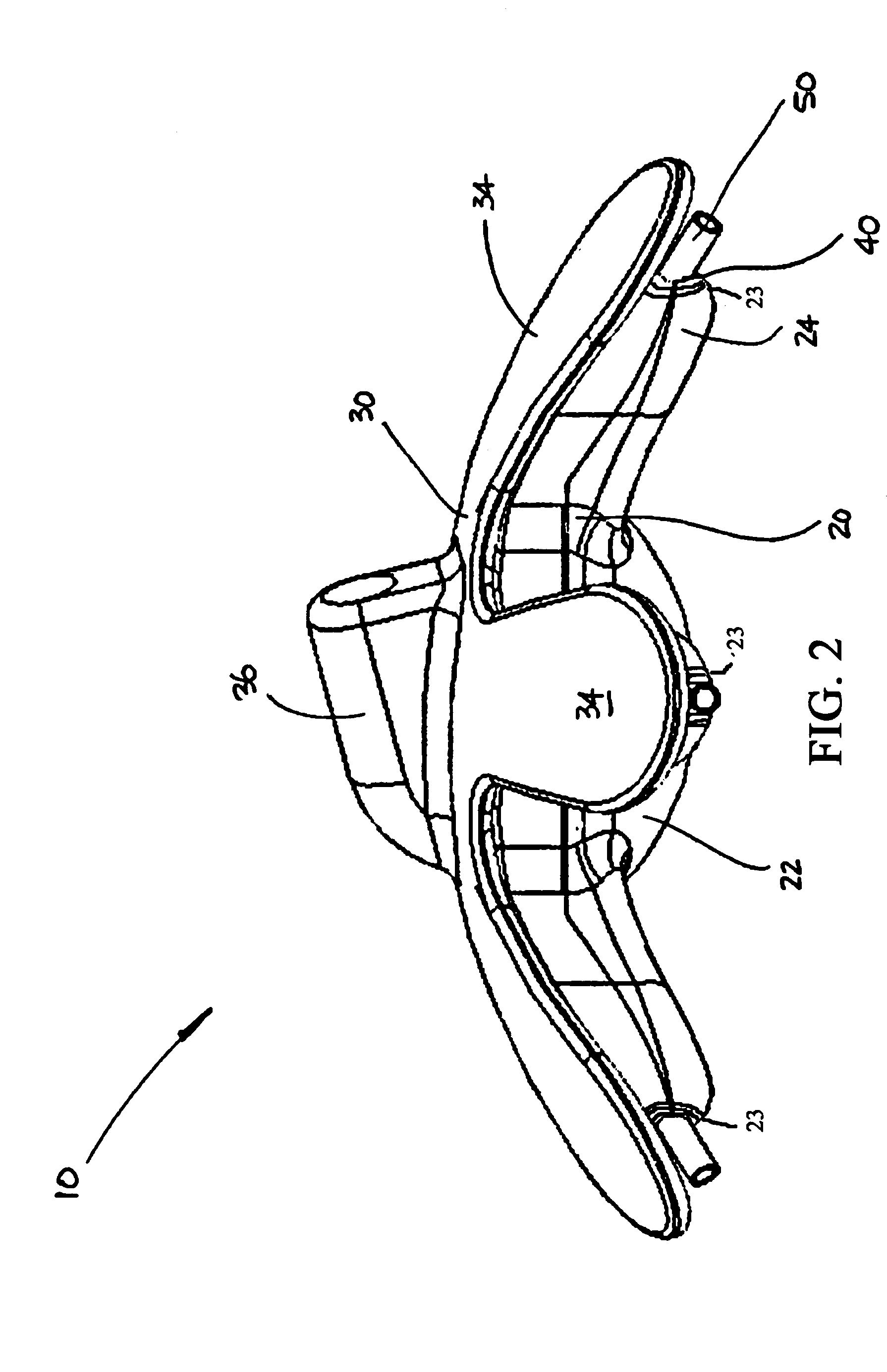Differential pressure wind meter
a wind meter and differential technology, applied in the direction of volume metering, electric generator control, instruments, etc., can solve the problems of inconvenient and fast response, inability to accurately measure wind velocity and direction, and high cost, so as to improve wind velocity and direction measurement, simple and scalable design, durability and longevity
- Summary
- Abstract
- Description
- Claims
- Application Information
AI Technical Summary
Benefits of technology
Problems solved by technology
Method used
Image
Examples
Embodiment Construction
[0034]FIGS. 1–3 are, respectively, top, side, and bottom perspective views of a wind meter 10 according to a preferred embodiment of the present invention. The wind meter 10 preferably comprises a housing 20, a cover / roof structure 30, a plurality of ports 40, a plurality of tubular structures 50, a plurality of MEM differential pressure sensors 60, and a control system 70.
[0035]The housing 20 generally comprises a central section 22 formed with an even number of outwardly extending lobes 24. The central section 22 and lobes 24 are preferably fabricated as a unitary component from a commercially available, injection moldable plastic such as injected PVC, ABS or polycarbonate. However, any strong, lightweight material, such as other plastic material or metal (e.g. aluminum) will suffice, so long as it can be formed into the shape of the housing 20 of the present invention.
[0036]The cover / roof structure 30 is preferably fixedly attached to the housing 20 and generally comprises a cent...
PUM
 Login to View More
Login to View More Abstract
Description
Claims
Application Information
 Login to View More
Login to View More - R&D
- Intellectual Property
- Life Sciences
- Materials
- Tech Scout
- Unparalleled Data Quality
- Higher Quality Content
- 60% Fewer Hallucinations
Browse by: Latest US Patents, China's latest patents, Technical Efficacy Thesaurus, Application Domain, Technology Topic, Popular Technical Reports.
© 2025 PatSnap. All rights reserved.Legal|Privacy policy|Modern Slavery Act Transparency Statement|Sitemap|About US| Contact US: help@patsnap.com



